LURID: vivid in shocking detail; sensational, horrible in savagery or violence, or, a twice-monthly guide to the merits of the kind of Bad Books you never want your co-workers to know you're reading.
“I saw the best minds of my generation destroyed by madness,
starving hysterical naked,
dragging themselves through the negro streets at dawn
looking for an angry fix…”
—Allen Ginsberg, Howl (1956)
Thanks to a spate of lurid headlines (Cannibals! Zombies! Demonic Possession!) over the last few weeks, drug-induced psychosis is clawing its way back into public consciousness as Social Evil No.1 – if it ever really went away. We may never know what caused Rudy Eugene to chew off 75% of Ronald Poppo’s face in Miami on the 26th of May, but the collective media finger of blame has been jabbed at “bath salts”, the street name for concoctions of amphetamine-related compounds sold as personal hygiene or cleaning products under innocuous-sounding names like Ivory Wave, Red Dove, Blue Silk, Cloud Nine, Ocean Snow or Vanilla Sky.
Bath salts have provided a convenient bête noir for outraged tabloid reporting for the last couple of years, a way of making connections between those anomalous “Man Bites Dog” (or Man Dressed In Bra and Panties Kills Goat) stories that would otherwise get lost in the ‘Random WTF’ files. Whether users are car surfing naked, eating their roommate or ripping out their own intestines and throwing them at police, the presence of bath salts in their system makes them part of a collective trend, shared time and time again on social media, and fuel for a growing moral panic.
As a society, we find it difficult to accept that people do crazy things. That has unfortunate implications for our (lack of a) mental health care system. It’s much easier to believe that people only do crazy things on drugs, tipped over the edge by psychosis-inducing substances they have willingly ingested, despite all warnings to the contrary. Before bath salts led the pack in the blame game, crystal meth, crack, PCP, LSD, reefer madness, cocaine, opium and gin have all had a spin on the scapegoat carousel. Historically, of course, none of these drug menaces has actually destroyed society, or even a generation, but they generate great copy and headlines, and over the centuries, have provided the narrative spine for some extremely lurid books.
In fiction, writers have always reached for the “drugs made me do it” device when it’s time for an otherwise rational character to do a crazy thing. It’s quick and easy. From the magical flower juice in A Midsummer Night’s Dream that causes a queen to fall in love with a donkey to the amyl-based hallucinogenic cocktail in Hannibal that compels Mason Verger to slice off his face with a shard of mirror and then feed it to his dogs (“Well, it seemed like a good idea at the time”), drugs are a convenient way of making a character behave out of character, with maximum dramatic effect.
For the aficionado, however, there is also a whole sub-genre of popular fiction that acknowledges that there is nothing quick or easy about a drug fix, and that addiction is an integral part of a character’s essence, rather than a temporary aberration. Part confession, part cautionary tale, part panegyric, these books feed into readers’ desire to learn about the boundaries of human experience from the safety of the middle. We may not be prepared to risk our own health and sanity in the pursuit of the ultimate high, but we sure like to read about those who did, and who, ideally, lived to tell the tale.
On one end of the spectrum is the refined, scientific prose of Aldous Huxley’s The Doors of Perception (1953), his account of a fine May afternoon spent in West Hollywood under the influence of mescaline. He admires flowers in a vase, browses art books in a drug store, listens to classical music, and has a nice sit down in the garden. Huxley’s experience is all about accessing a higher consciousness, using the influence of the drug on his normal sensory perception to open himself up to greater truths. It’s all very intellectual, all very noble, and about as far from naked cannibalism on the MacArthur Causeway off-ramp as it’s possible to get.
At the other end of the spectrum are the self-proclaimed Bad Books, the ones that go deep into the dirty nasty. Mostly autobiographical, they’re front-line dispatches from the war on drugs declared long before Nixon signed it into law in 1971. Salacious, sensationalist and sometimes very sad, these books tap into the damaged psyches of users and abusers, offering up a plethora of perverse pleasures to the armchair tripper. They take us through garbage-strewn alleyways, piss-smelling staircases and into the fetid apartments only an addict would willingly frequent. They put us in dangerous, stupid and criminal situations only an addict would voluntarily risk. And they hint at the paroxysms of ecstasy only an addict can aspire to (“Take yir best orgasm, multiply the feeling by twenty, and you’re still fuckin miles off the pace” – Trainspotting). Here’s a Top Ten of those mucky puppies, definitely to be handled with latex-gloved care. You know only too well the kind of filth and degradation these stories have been through.
![]() 1. 'Confessions of An English Opium Eater' (1821) by Thomas De Quincey
1. 'Confessions of An English Opium Eater' (1821) by Thomas De Quincey
The granddaddy of them all, De Quincey’s Confessions conjures up the world of the Romantic poets and painters, where opium dreams were an integral part of serious creative business – neither Frankenstein nor Kubla Khan could have been written without them. Intensely autobiographical, it deals with both the Pleasures (“I sometimes seemed to have lived for 70 or 100 years in one night”) and the Pains (“I was kissed, with cancerous kisses, by crocodiles; and laid, confounded with all unutterable slimy things, amongst reeds and Nilotic mud”) of laudanum, the opium-alcohol tincture popular at the time. It made De Quincey an instant sensation, and was wildly influential – unfortunately too many readers focused on the Pleasures, rather than the Pains section.
![]() 2. 'Diary of A Drug Fiend' (1922) by Aleister Crowley
2. 'Diary of A Drug Fiend' (1922) by Aleister Crowley
Despite its tabloid-baiting title (and, boy, did the tabloids go into a frenzy upon publication), this thinly-disguised autobiography from Crowley contains an honest and insightful depiction of addiction. He wrote it not only for the quick cash from publishers, Collins, but also as a riposte to the Dangerous Drugs Act of 1920 which made opium (and all its derivatives) and cocaine illegal. Crowley had been using these substances in his magickal and philosophical workings for many years and resented being criminalized or diagnosed as suffering from a disease. The titular “Fiend” is actually WW1 flying ace, Peter Pendragon, knighted for his aerial dynamics against the Boche. Bored and directionless after Armistice Day, he falls in love with prototype Bright Young Thing Louise Laleham, who introduces him to the all the highs and lows that heroin and cocaine can offer them across the hotspots of post-war Europe. Eventually, the drug fun grinds to a halt and the young couple turn to King Lamus, a magickal adept who teaches them that human Will can overcome anything, even chemical dependency.
![]() 3. 'Naked Lunch' (1959) by William S. Burroughs
3. 'Naked Lunch' (1959) by William S. Burroughs
Bombastic, blustering, boot-in-your-face Burroughs doesn’t pull any punches in his Beat-driven account of a (mainly) heroin addiction that crosses time and space. Are you tough enough to take it? In the introduction, he implies that he doesn’t want the reader to enjoy his work (“it is necessarily brutal, obscene and disgusting. Sickness has often repulsive details not for weak stomachs”). Written in a hotel room in Tangier, when (Burroughs claims) “I had not taken a bath in a year or changed my clothes or removed them except to stick a needle every hour in the fibrous grey wooden flesh of terminal addiction,” Naked Lunch is less a novel, more a blend of dream, digression, delusion and diatribe. A mélange of junk, sex (including an orgy), social critique and self-loathing, strung out in loops of logic and location that only make sense to the loaded.
![]() 4. 'A Clockwork Orange' (1962) by Anthony Burgess
4. 'A Clockwork Orange' (1962) by Anthony Burgess
From the first page, when he and his droogs sip on their “milk plus something”, Alex DeLarge’s impulses are inextricably linked to his drug consumption. Although he knows his hallucinogens (“vellocet or synthemesc or drencrom or one or two other veshches which would give you a nice quiet horrorshow fifteen minutes admiring Bog And All His Holy Angels and Saints in your left shoe with lights bursting all over your mozg”) he thinks that tripping your tits off in a mesto is, at the end of the day, “very cowardly”. He prefers stimulants that will enhance his capacity for a bit of the old ultraviolence. Alex enjoys anything that heightens his sensory awareness, whether he’s listening to Beethoven, raping underage girls, or conducting a home invasion with a few close friends. However, Burgess weaves drugs into Alex’s rise and fall; our hero is prevented from running amok any more by being chemically castrated (“this Ludovico stuff was like a vaccination and there it was cruising about in my krovvy, so that I would be sick always for ever and ever amen whenever I viddied any of this ultra-violence”) – or so he thinks.
![]() 5. 'Fear And Loathing In Las Vegas: A Savage Journey to the Heart of the American Dream' (1972) by Hunter S. Thompson
5. 'Fear And Loathing In Las Vegas: A Savage Journey to the Heart of the American Dream' (1972) by Hunter S. Thompson
Thompson’s autobiographical account of a trip to Vegas on a press junket for the annual Mint 400 desert race - with what “looked like a mobile police narcotics lab” in the trunk of the rental car - is by turns hilarious and terrifying. The protagonist, Raoul Duke, brings along his Samoan attorney, Dr. Gonzo, plus
"...two bags of grass, seventy-five pellets of mescaline, five sheets of high-powered blotter acid, a salt shaker half full of cocaine, and a whole galaxy of multi-colored uppers, downers, screamers, laughers and also a quart of tequila, a quart of rum, a case of Budweiser, a pint of raw ether and two dozen amyls."
Together they embark on what can only be described as a rampage, “burning the locals, abusing the tourists, terrifying the help”. Thompson’s coruscating, manic prose captures the mayhem perfectly, never letting the pace of their paranoia slacken, but never losing his grip on the satiric thread that gives their adventures at least some structure. Fear And Loathing… is simultaneously an insane head-trip and a sober commentary on “this doomstruck era of Nixon”. Despite the marauding bats, lizards, weasels and a detour through Circus-Circus (“what the whole hep world would be doing on Saturday night if the Nazis had won the war”), Duke and Gonzo persist in their search for the American Dream. So much more substance (and substance abuse) than all The Hangover movies made and still yet to be made, rolled into a skinny 124 pages.
![]() 6. 'A Scanner Darkly' (1977) by Philip K. Dick
6. 'A Scanner Darkly' (1977) by Philip K. Dick
Dick’s dystopian noir vision of a future (1994) society split between straights and addicts of the psychoactive Substance D (nickname: death) is based on his personal experience of drug abuse in Orange County in the early 1970s. After his fourth wife left, he invited various street kids to come and live with him so that his house didn’t feel so large and empty. He soon became dependent on amphetamines and immersed in the slang and rhythms of their alternative culture. It’s obvious that Dick identifies with Fred/Arctor, the narcotics double agent at the center of the narrative who is living undercover in a junkie house, and is slowly becoming addicted to Substance D himself. It’s a dangerous position to be in:
"What an undercover narcotics agent fears most is not that he will be shot or beaten up but that he will be slipped a great hit of some psychedelic that will roll an endless horror feature film in his head for the remainder of his life, or that he will be shot up with a mex hit, half heroin and half Substance D, or both of the above plus a poison such as strychnine, which will nearly kill him but not completely, so that the above can occur: lifelong addiction, lifelong horror film. He will sink into a needle-and-a-spoon existence, or bounce off the walls in a psychiatric hospital or, worst of all, a federal clinic."
After the two hemispheres of his brain stop communicating, thanks to the permanent neurophysical damage wreaked by Substance D, Arctor ends up in his worst nightmare, forced rehab. Bleak, uncompromising, elegiac, A Scanner Darkly is probably Dick’s best novel, but he had to put himself through hell to write it.
![]() 7. 'Requiem For A Dream' (1978) by Hubert Selby, Jr.
7. 'Requiem For A Dream' (1978) by Hubert Selby, Jr.
Even more bleak is Requiem for A Dream. Selby explores addiction as it affects the lives of a loosely linked quartet – Sara Goldfarb and her son Harry, his girlfriend Marion and his friend Tyrone. Over three seasons in New York City, their lives disintegrate thanks to narcotic influences. While Harry, Marion and Tyrone fall victim to heroin, Sara’s poison of choice is diet pills and her story is the saddest. She has very little conception of what is happening to her and why, even when psychosis hits and she’s locked away and subjected to electric shock treatment. Nobody else gets a happy ending either, with jail, prostitution and a nasty amputation on the cards. Selby takes the reader unflinchingly through the characters’ chain of bad choices, and their continued misunderstanding of the threat they face. “He didn’t know what was defeating him, but he sensed it was something he could not cope with, something that was far beyond his power to control or even at this point in time comprehend.” Quite possibly the saddest book you’ll ever read.
![]() 8. 'Trainspotting' (1994) by Irvine Welsh
8. 'Trainspotting' (1994) by Irvine Welsh
By contrast, Trainspotting is almost joyous. A loosely-linked series of vignettes and characters, it’s a celebration of male friendship and youth culture in Britain in the late 1980s, as well as an exploration of the dark side of hedonism. The central characters are all addicted to something – mostly heroin, but with alcohol, amphetamines and violence thrown into the mix. To some extent, Welsh’s Edinburgh is a manifestation of Burgess’s dystopia from A Clockwork Orange. Renton, Spud, Sick Boy, and Tommy could all be droogs to Begbie’s Alex, but they exist in a bitterly realistic world of unemployment, poverty, HIV infection and cot death. And opium suppositories that Renton must retrieve from the most disgusting blocked toilet in literary history, the “bowl fill ay broon water, toilet paper and lumps ay floating shite”:
"Ah roll up ma shirt sleeve and hesitate only briefly, glancing at ma scabby and occasionally weeping track marks, before plunging ma hands and forearms intae the brown water. Ah rummage fastidiously and get one ay ma bombs back straight away. Ah rub off some shite that's attached tae it. A wee bit melted, but still largely intact."
Although Welsh can be compassionate towards his characters when necessary (particularly those who have to deal with the all-too-common drug related death of a loved one), Renton, his main narrator, is as caustic as Thompson when it comes to describing the under-the-influence antics of his friends. Trainspotting resonates with a slick, sick sense of humor. It’ll put you off a lot of things for life.
![]() 9. 'Crank' (2004) by Ellen Hopkins
9. 'Crank' (2004) by Ellen Hopkins
So much of the drugs oeuvre is so macho, it’s refreshing to read a story about and from the female perspective. Hopkins based the oft-banned book on her own daughter’s four-year battle with crystal meth. In free verse, she charts the slide into substance abuse of “perfect daughter: gifted high school junior, quiet, and never any trouble” Kristina, whose first and main mistake is to fall in love with the wrong boy, Adam. With soap opera-unseemly speed after her first hit of crank (supplied by Adam) Kristina (who starts to refer to herself as Bree) is hurled through the looking glass into a world of suicide attempts, rape, a stint in juvy hall, Mexican connections, meth-dealing and, to top it all, pregnancy. Kristina/Bree is as confused as any other teenage girl, but Hopkins makes it chillingly clear how her meth use amplifies the usual adolescent folly into tragedy. There’s no glamorization of the lifestyle here, Crank is cautionary tale all the way:
"you fly until you crash two days
two nights
no sleep,
no food,
come down off the monster
YOU CRASH REAL HARD"
Even if you’re a seasoned Breaking Bad fan, Crank hits much, much harder than you might expect from a book aimed primarily at middle school girls.
![]() 10. 'Eating Smoke: One Man's Descent into Drug Psychosis in Hong Kong's Triad Heartland' (2011) by Chris Thrall
10. 'Eating Smoke: One Man's Descent into Drug Psychosis in Hong Kong's Triad Heartland' (2011) by Chris Thrall
Former Royal Marine Thrall charts the by-now familiar downward spiral into meth psychosis in this candid memoir about navigating “the world's most unforgiving city while addicted to the world's most dangerous drug”. It’s set in Hong Kong, in the couple of years immediately before the Handover to China. No one knew what kind of limits Beijing would impose on its newest territory come July 1st 1997; in the underground dance clubs of Wan Chai it was time to party like it was the end of the world. Thrall’s story is of the innocent who got lost in these hedonistic woods, describing himself as “not a stupid guy, just an average guy who does stupid things”. After his network marketing business is a bust, he sinks through a couple of layers of low-paid ex-pat gigs before landing as a nightclub doorman. At first, it’s a great way to meet people and chat up girls – working and regular - but soon he finds himself doing ice (known locally as 'bing') in order to stay awake for his shifts and his new 72-hour party pals. And then more ice. And then more, until he stops sleeping, starts losing job after job, his apartment and his grip on reality. And realizes he’s employed at an establishment run by the notorious 14K Triad gang, who are pissed at him. Thrall’s always a likable voice, even when he’s taking the reader on one of his most hyper-paranoid trips, and you will root for his survival and redemption. He captures the underground heartbeat of a crazy city at a crazy time.
In five, ten, twenty (if we manage to dodge the zombie apocalypse for that long) years there will inevitably be bath salts memoirs to add to this list, first person accounts of stripping naked, chowing down on human flesh and being Tasered into submission by a terrified SWAT team – and living long enough to get sober and tell the tale. When you look at the next set of outraged headlines about a bath salts-related incident, remember that today’s moral panic is tomorrow’s bestseller, and could perhaps even one day become a literary classic, on your grandchildren’s college reading list.
Once again, I could only get ten on this list. What are your favorite books about drugs and addiction?

About the author
Karina Wilson is a British writer based in Los Angeles. As a screenwriter and story consultant she tends to specialize in horror movies and romcoms (it's all genre, right?) but has also made her mark on countless, diverse feature films over the past decade, from indies to the A-list. She is currently polishing off her first novel, Exeme, and you can read more about that endeavor here .
 1. 'Confessions of An English Opium Eater' (1821) by Thomas De Quincey
1. 'Confessions of An English Opium Eater' (1821) by Thomas De Quincey
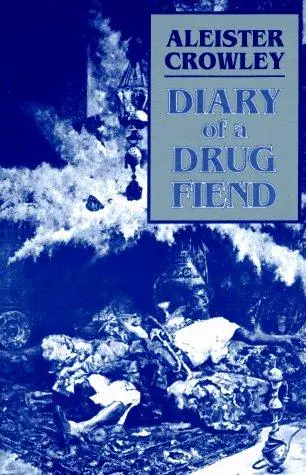 2. 'Diary of A Drug Fiend' (1922) by Aleister Crowley
2. 'Diary of A Drug Fiend' (1922) by Aleister Crowley
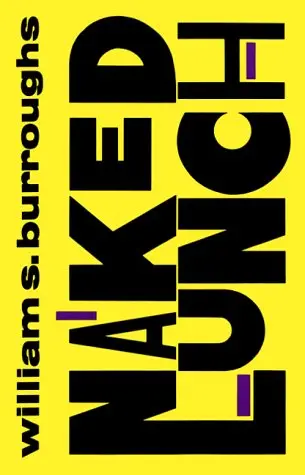 3. 'Naked Lunch' (1959) by William S. Burroughs
3. 'Naked Lunch' (1959) by William S. Burroughs
 4. 'A Clockwork Orange' (1962) by Anthony Burgess
4. 'A Clockwork Orange' (1962) by Anthony Burgess
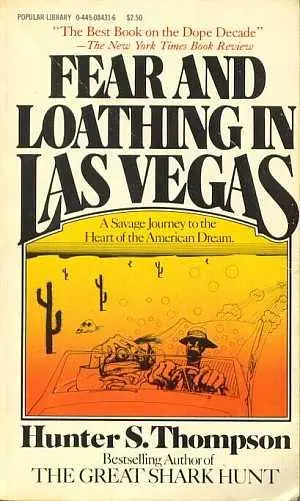 5. 'Fear And Loathing In Las Vegas: A Savage Journey to the Heart of the American Dream' (1972) by Hunter S. Thompson
5. 'Fear And Loathing In Las Vegas: A Savage Journey to the Heart of the American Dream' (1972) by Hunter S. Thompson
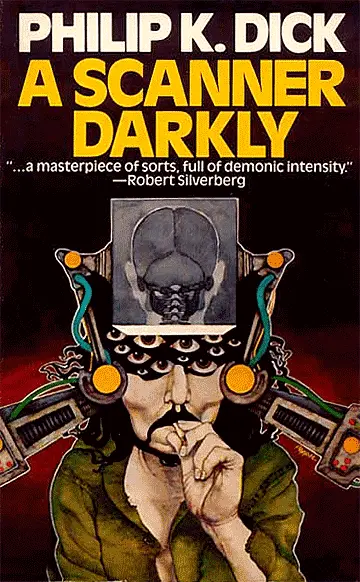 6. 'A Scanner Darkly' (1977) by Philip K. Dick
6. 'A Scanner Darkly' (1977) by Philip K. Dick
 7. 'Requiem For A Dream' (1978) by Hubert Selby, Jr.
7. 'Requiem For A Dream' (1978) by Hubert Selby, Jr.
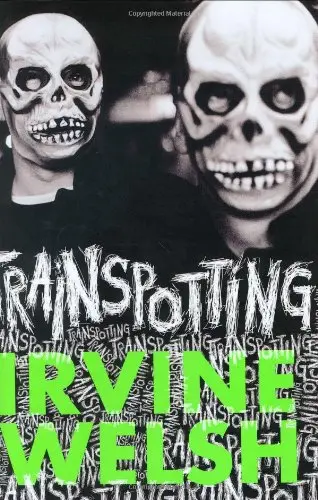 8. 'Trainspotting' (1994) by Irvine Welsh
8. 'Trainspotting' (1994) by Irvine Welsh
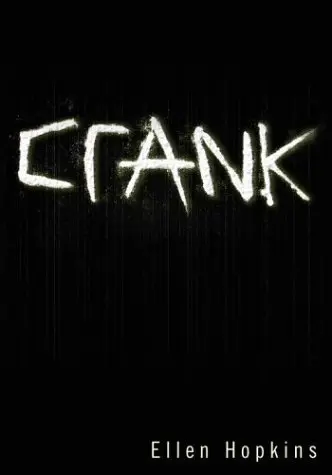 9. 'Crank' (2004) by Ellen Hopkins
9. 'Crank' (2004) by Ellen Hopkins
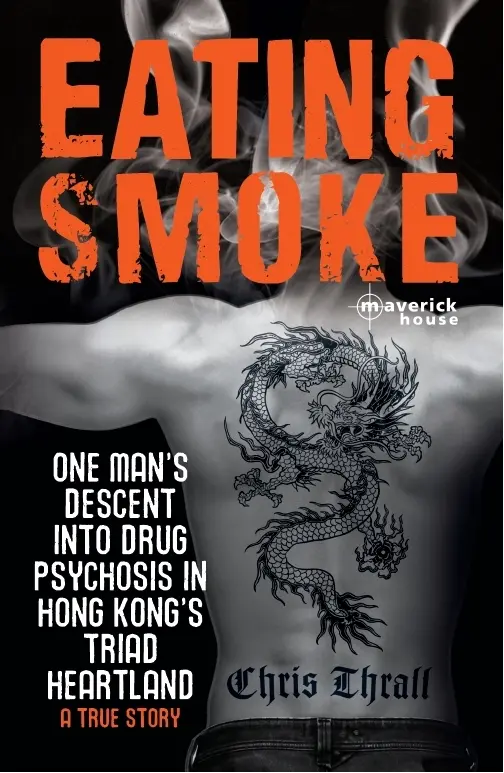 10. 'Eating Smoke: One Man's Descent into Drug Psychosis in Hong Kong's Triad Heartland' (2011) by Chris Thrall
10. 'Eating Smoke: One Man's Descent into Drug Psychosis in Hong Kong's Triad Heartland' (2011) by Chris Thrall







